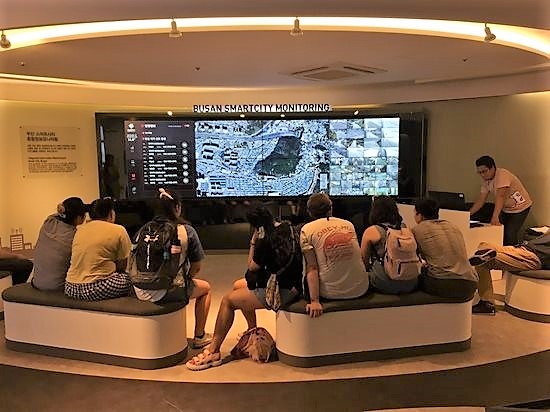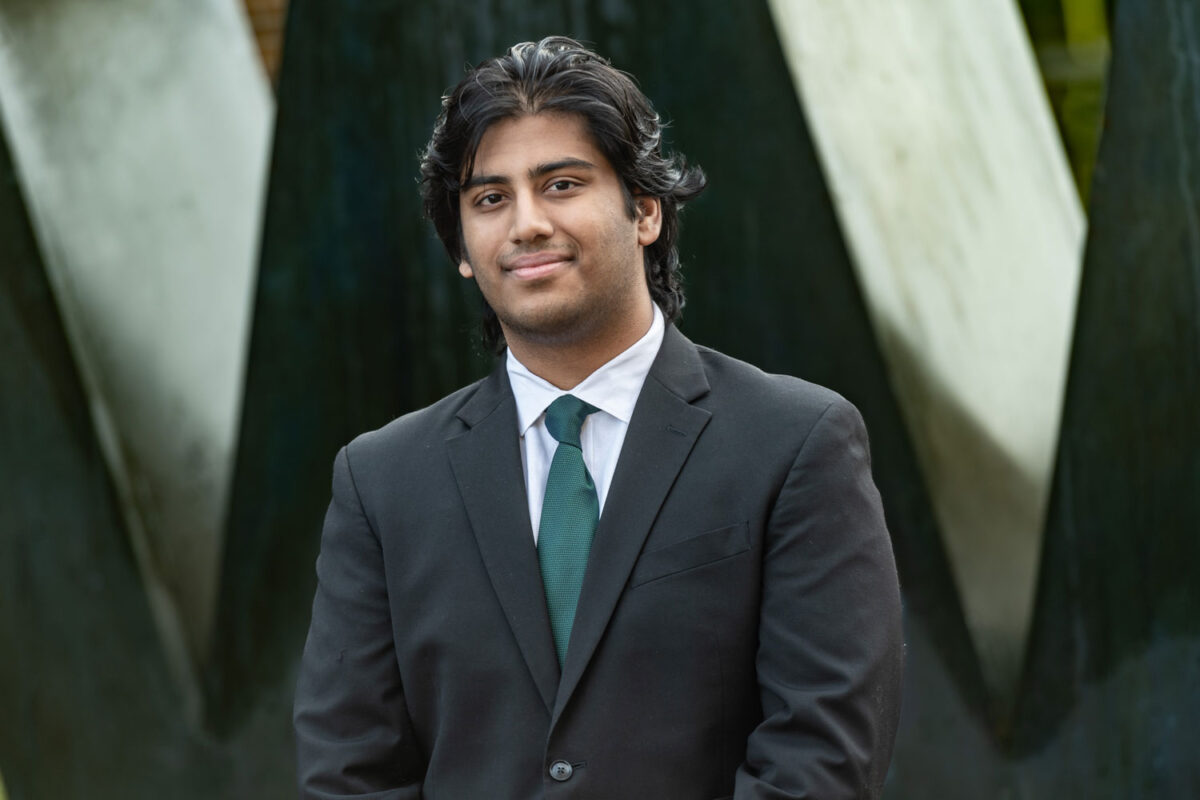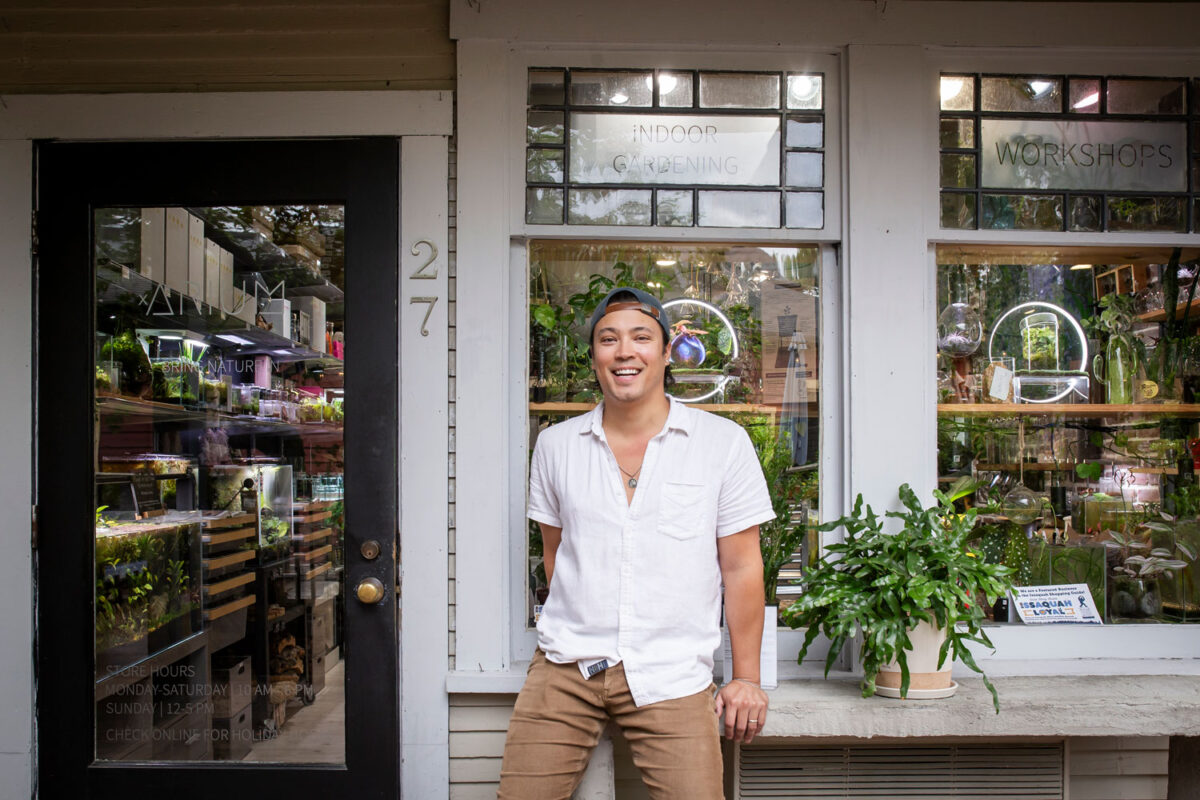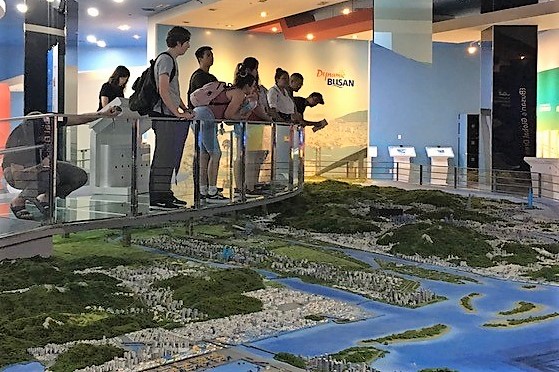
By Douglas Esser
South Korea has a national policy to embrace technology in its cities, said Jin-Kyu Jung, an associate professor at the University of Washington Bothell who grew up in Busan, the country’s second-largest city. Planners everywhere are pushing to use “smart city” information and communication technologies to improve transportation, utilities and services.
Just don’t forget to ask local residents what they think is smart, Jung said. Local communities are often marginalized in planning conversations, yet greatly affected by the outcomes.
Planning with the people
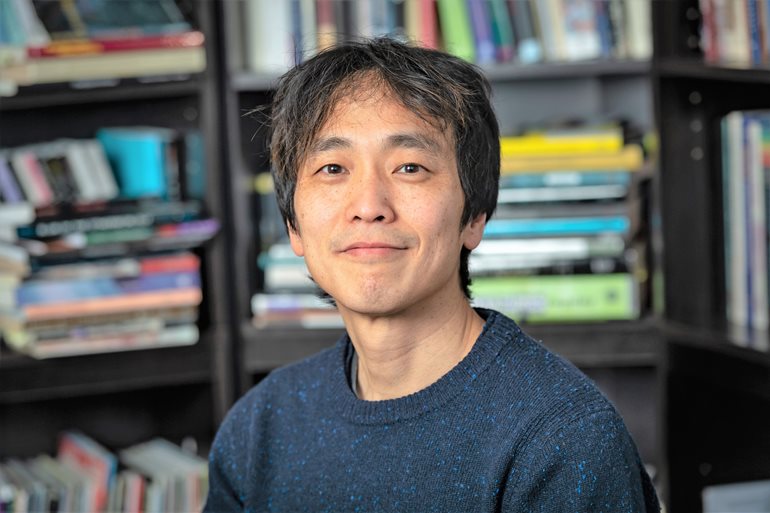
It’s amazing what the internet and smartphones can do. Smart city technology can add sensors to street lights and turn them into weather stations. Information screens at bus stops can provide far more information than the next arrival time. In Busan, for example, residents headed for a crowded beach can select coordinates on their phone to reserve a site.
As an urban geographer, Jung is familiar with smart city technology. He teaches urban planning and geographic information science in the School of Interdisciplinary Arts & Sciences (IAS). One class, working with the city of Redmond, Washington, recently offered suggestions for transit-oriented development around Sound Transit’s light rail link.
This year, Jung co-led a study abroad trip to South Korea with Gunwha Oh, a lecturer in the UW Department of Geography and affiliate IAS faculty. For the Mapping Communities in the Smart City seminar, the group of nine UW students from the Bothell and Seattle campuses traveled in South Korea from Aug. 10 to Sept. 3. to see what smart city technology means on the ground.
They spent most of their time in Busan, a port city like Seattle that is developing smart technology in several districts. They attended workshops with students at Pusan National University (PNU), a national smart city training institution. (The city changed the spelling of its name to a B in 2000, but the university stuck with the P spelling.)
What’s smart in Busan
One highlight for students was visiting Busan’s Ami-Dong district. Historically poor, it was built on a graveyard using the tombstones. When students asked local residents about the impact of smart technology, they mentioned two things.
Street cameras, which had been installed by police to fight crime, weren’t particularly well-placed. But there was another service that residents liked: neighborhood laundries. They not only provided a place to wash clothes, people also could take showers. The laundries turned into gathering spaces.
The technology isn’t new, of course, but to the residents, it was smart for community building, Jung said.

The visit to Ami-Dong stood out because the students had been in presentations with city planners touting high-tech improvements, said Daisy Rithvixay, a UW Bothell senior double majoring in Global Studies and in Law, Economics & Public Policy.
“We never saw the interaction between the city planners and the community that they’re trying to improve,” she said. “When it came to Ami-Dong, we saw that sense of community that we were missing the whole time. We were really inspired.”
Overall, the students were impressed by the smart city technology they saw, Rithvixay said. For example, Koreans use a universal transit pass, like the Orca card familiar to Seattle commuters, but the card also can be used in vending machines or to buy groceries.
Cross-cultural perspectives
After traveling outside the United States for her first time, Rithvixay said the study abroad trip was an enriching experience. She said the students talked about making a reunion trip to Korea in five years to see the smart city improvements and urban regeneration.
For their work with students in PNU’s Department of Urban Planning in Busan, the UW students received a Korean Certificate of Smart City Planning. The students also visited and met with officials in three other cities: Changwon, Sejong and Songdo International District in Incheon.
As a result of the study abroad visit, PNU may send a similar-sized group of students and faculty next summer to UW Bothell to learn about smart city technology in the Seattle area. They might take part in one of Jung’s courses. In addition, experts from Changwon Research Institute, a think tank associated with the city of Changwon, may visit Seattle, Jung said.
The Koreans are interested in how Seattle uses smart governance — how to use technology to enable more participatory decision making, Jung said. For example, Seattle’s Find It, Fix It smartphone app pinpoints potholes and other problems by drawing on the residents’ collective intelligence.
Smart beyond technology
More smart city technology is coming, said Jung, but rushing its development too often overlooks the need to have “smart” defined by the community.
“It is important that we value people’s knowledge based on their experience,” he said. “This is what I’m interested in — how better technology can create better communities.”
